A cylinder is moving along a horizontal surface without slipping with an angular velocity If the rod is leaning on the cylinder with one end hinged. Then which of the following statements is/are correct for the moment when angle
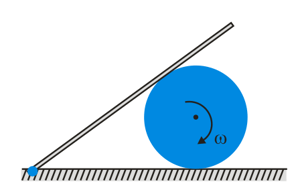

Important Questions on Rotational Motion
One end of a rod of length is fixed to a point on the circumference of a wheel of radius The other end is sliding freely along a straight channel passing through the center of the wheel as shown in the figure below. The wheel is rotating with a constant angular velocity (in radian per second) about
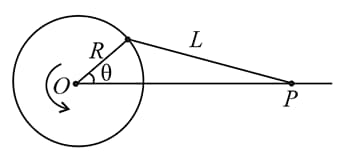
The speed of the sliding end when is
A mass is supported by a massless string wound around a uniform hollow cylinder of mass m and radius R. If the string does not slip on the cylinder, with what acceleration will the mass fall on release?
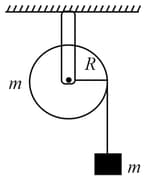
The angular speed of truck wheel is increased from to in seconds. The number of revolutions by the truck engine during this time is ______.
(Assuming the acceleration to be uniform).
A solid disc of radius and mass rolls down without slipping on an inclined plane making an angle with the horizontal. The acceleration of the disc will be , where is _______. (Round off to the nearest integer)
( acceleration due to gravity and angle as shown in figure)
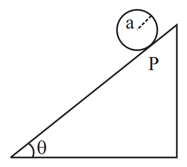
A rigid massless rod of length has two masses attached at each end as shown in the figure. The rod is pivoted at point on the horizontal axis. When released from the initial horizontal position, its instantaneous angular acceleration will be

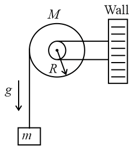
Consider regular polygons with number of sides as shown in the figure. The center of mass of all the polygons is at height from the ground. They roll on a horizontal surface about the leading vertex without slipping and sliding as depicted. The maximum increase in height of the locus of the center of mass for each polygon is . Then, depends on and as

A ball is rolling without slipping in a spherical shallow bowl (radius ) as shown in the figure and is executing simple harmonic motion. If the radius of the ball is doubled, then the time period of oscillation


